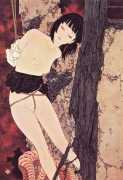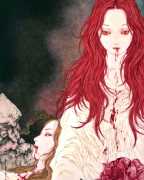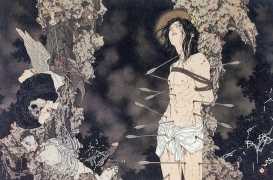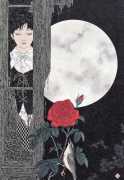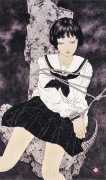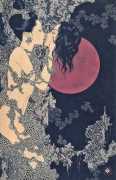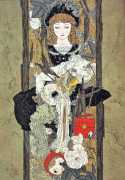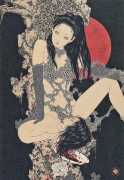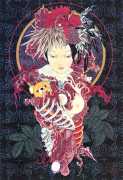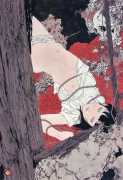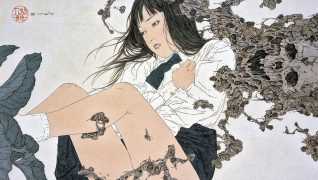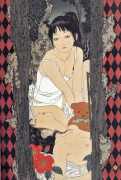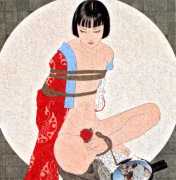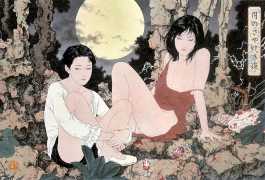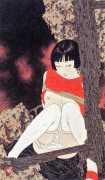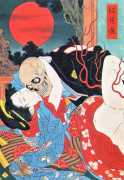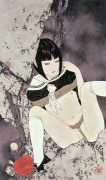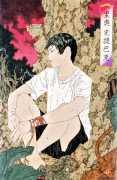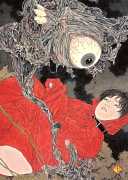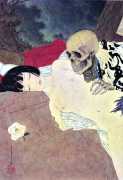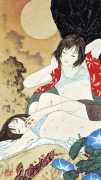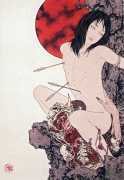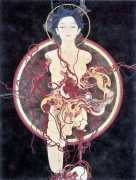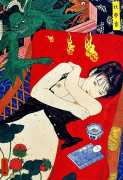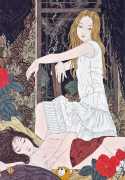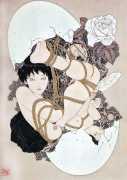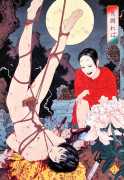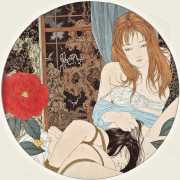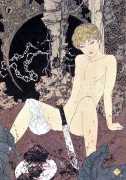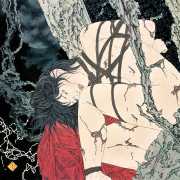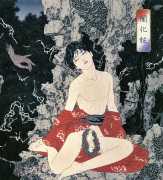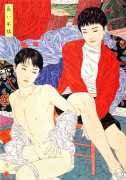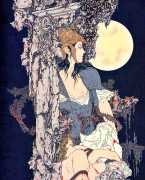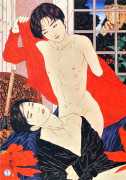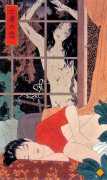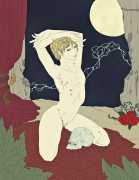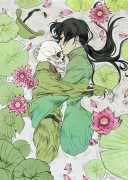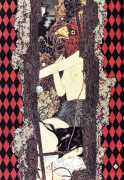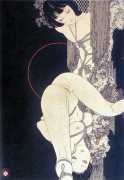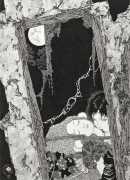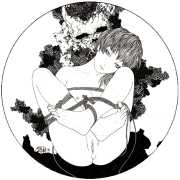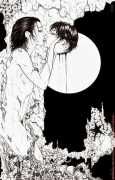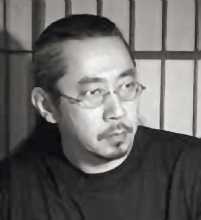 Takato Yamamoto grew up in Akita in north-eastern Japan, and after graduating from the painting department of the Tokyo Zokei University he experimented with modern interpretations of the perennially popular Ukiyo-e style. Translated as ‘Pictures of the Floating World’, Ukiyo-e art developed during the Edo period in the late nineteenth century, depicting famous actors, beautiful courtesans, city life, romantic landscapes and erotic scenes.
Takato Yamamoto grew up in Akita in north-eastern Japan, and after graduating from the painting department of the Tokyo Zokei University he experimented with modern interpretations of the perennially popular Ukiyo-e style. Translated as ‘Pictures of the Floating World’, Ukiyo-e art developed during the Edo period in the late nineteenth century, depicting famous actors, beautiful courtesans, city life, romantic landscapes and erotic scenes.
During the 1990s Yamamoto refined and developed his own trademark art, in a style that he termed ‘Heisei aestheticism’, blending influences from Ukiyo-e with Western gothic art to create dark, strangely beautiful images. His surrealistic and highly detailed works often explore themes of violence, death and sexuality to create unsettling and highly symbolic imagery. The Heisei period of Japanese history, which followed the Edo (Heisei means ‘achieving peace’), ended with Emperor Akihito’s historic abdication in 2022, the first Japanese emperor to abdicate in over two centuries.
Yamamoto’s first exhibition was held in 1998 in Tokyo, and he has exhibited regularly since throughout Japan, and also abroad in Hong Kong, Taiwan and Rome
Yamamoto’s art often deals with crude themes, but explores them in a startling delicate manner. It is this delicacy which enables the viewer to appreciate often horrifying images in an unusually engaging way.
We are very grateful to our Russian friend Yuri for introducing us to the work of this artist, and for supplying the images.



